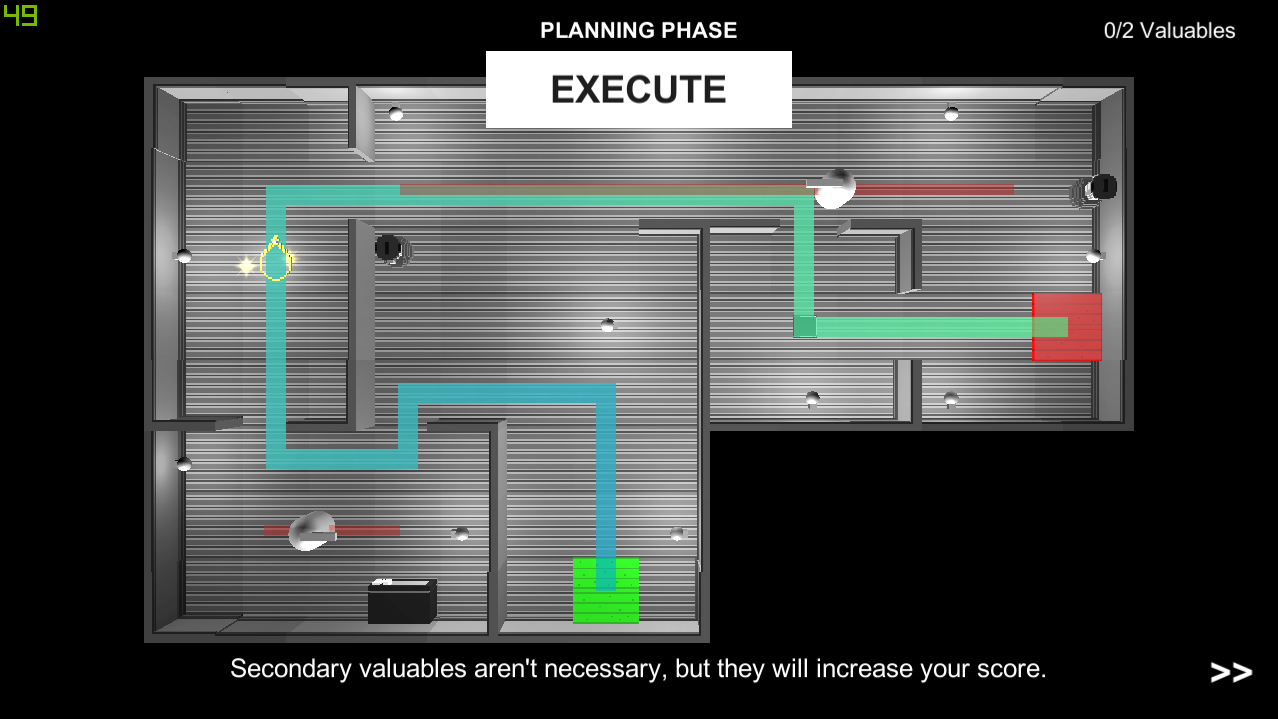The first stage of the game is there to teach the player how to play the game. Each level at the start presents a new mechanic/system to the player.
Level 1
Level 1 introduces drawing the accomplice's route and collecting the primary valuable. Why wasn't the first level just drawing the route? Well because the goal of every single level is to collect that valuable. Having the first level dedicated to just that objective with no other distractions in the way, implies that this is what the player needs to do. Having the primary valuable in a separate room also shows that the path can turn. If the valuable was in the middle between the entrance and exit, then that ability may not be known to the player.
Level 2
Level 2, we introduce guards, in turn also distractions as well. This level shows the player how guards interact with distractions and how they move along patrol routes. The guard is mostly always in range of the distraction, so when it's touched, the guard will mostly always go to it. Since it's in a separate room, it makes this level quite easy.
Level 3
Level 3 had multiple distractions. It shows that solutions to a level aren't visible in the first few seconds. The player will need to think when and which distractions to tap, so that the guard doesn't see their accomplice.
Level 4
Level 4 introduces secondary valuables. With previous elements and systems that were introduced, in play, this secondary valuable is something that is quite easy to get and the path to it is easier than if you were to avoid it. This is just to show the player what a secondary valuable is, and how it can improve your score. In the future, these valuables won't be as easy to achieve and will most of the time be along the path with most risk.



